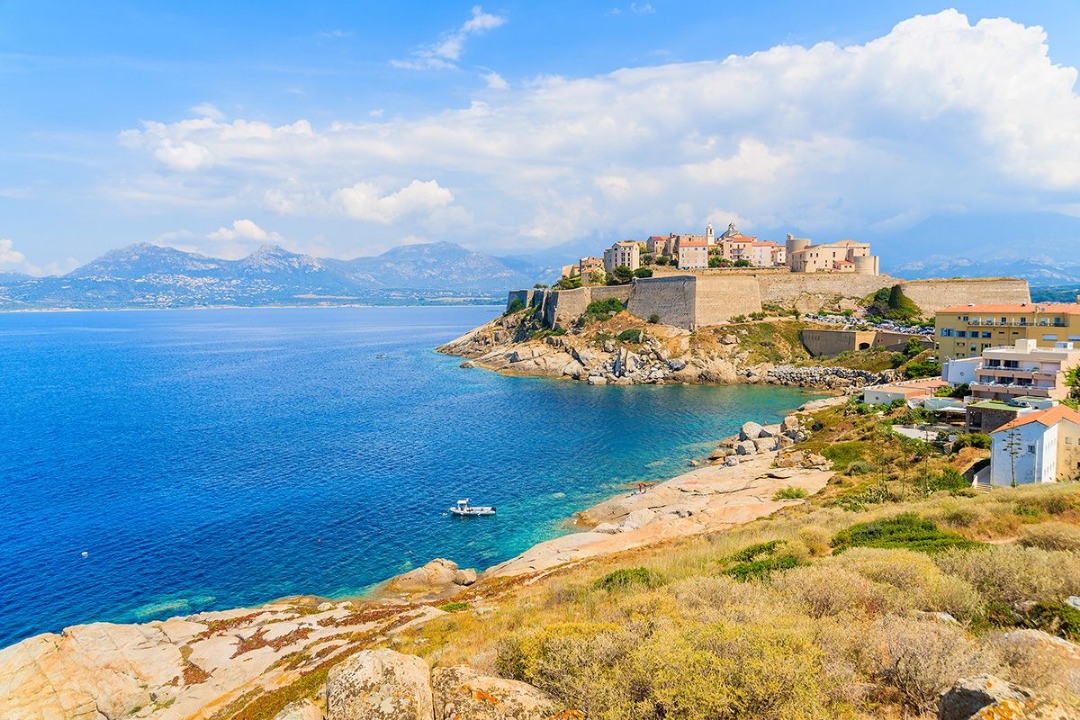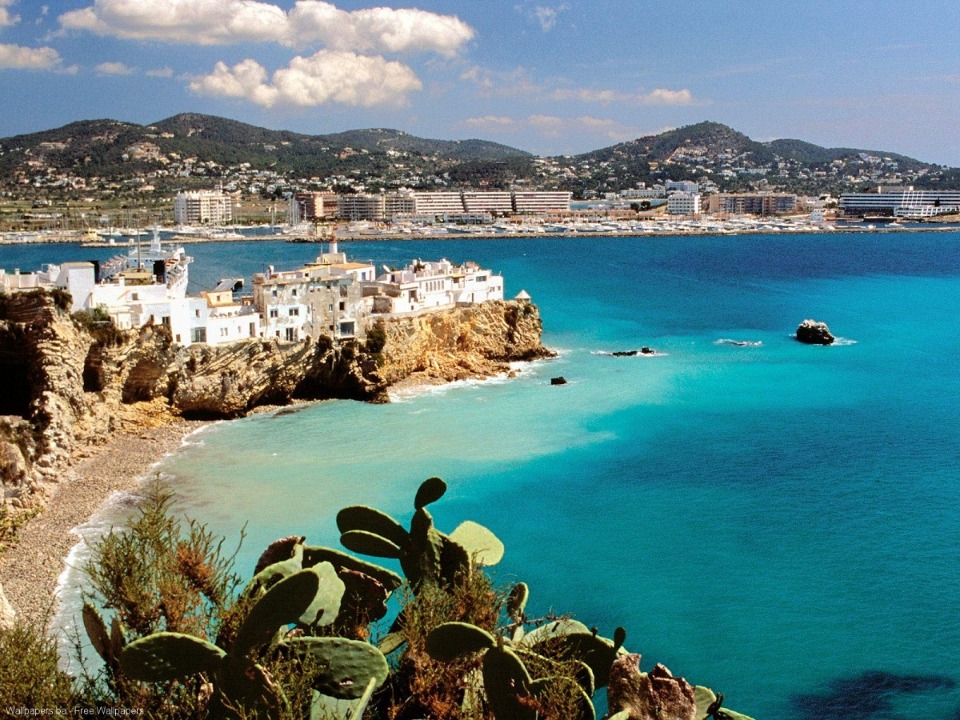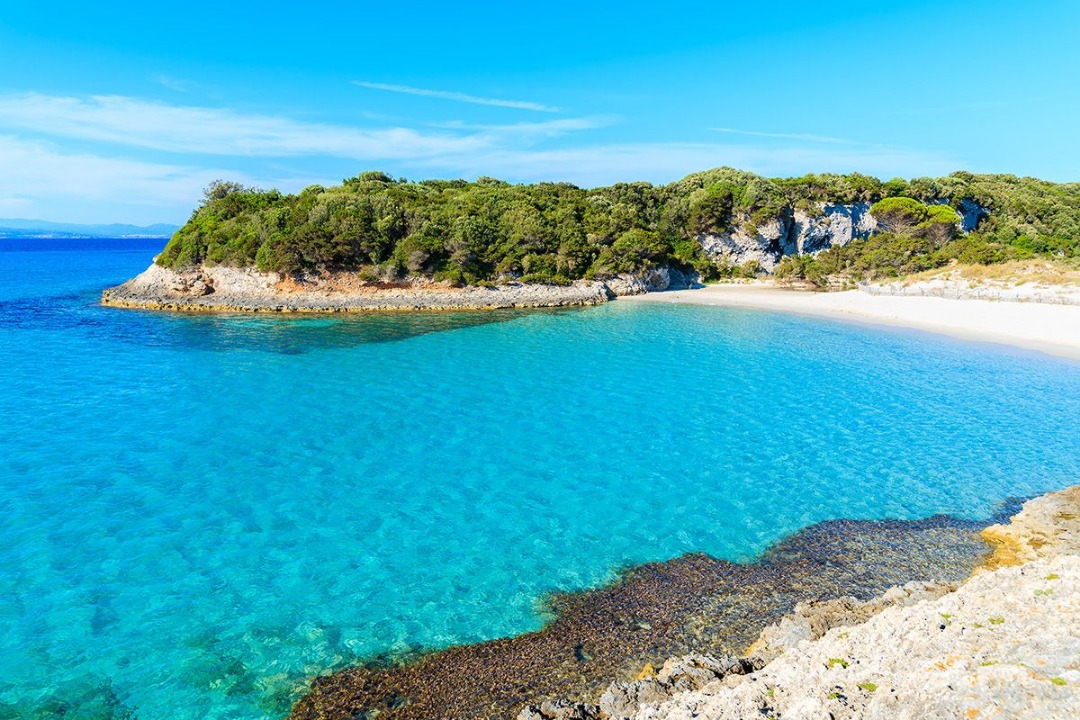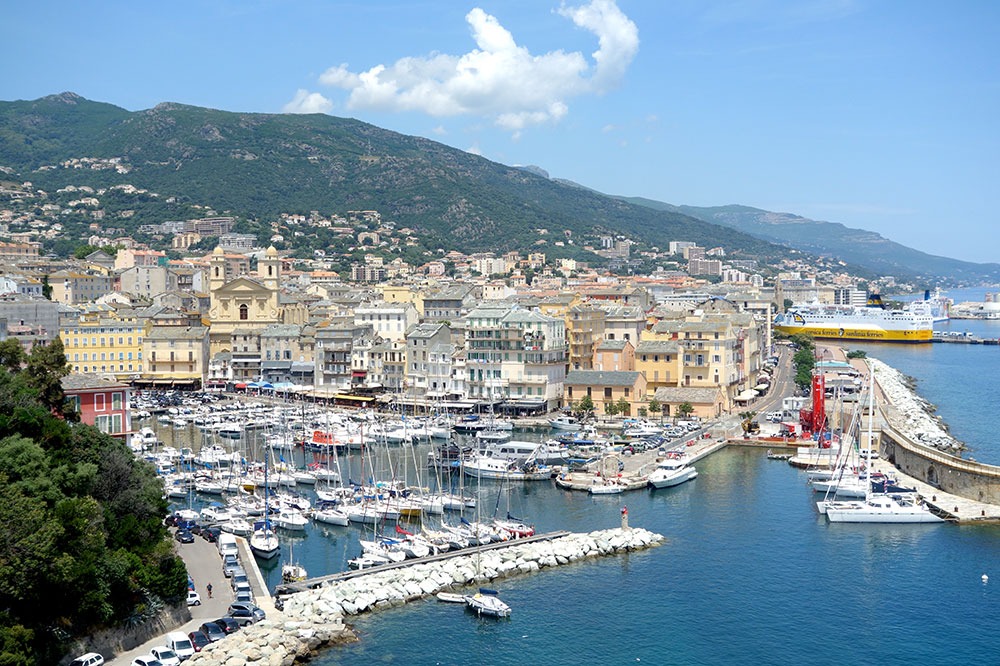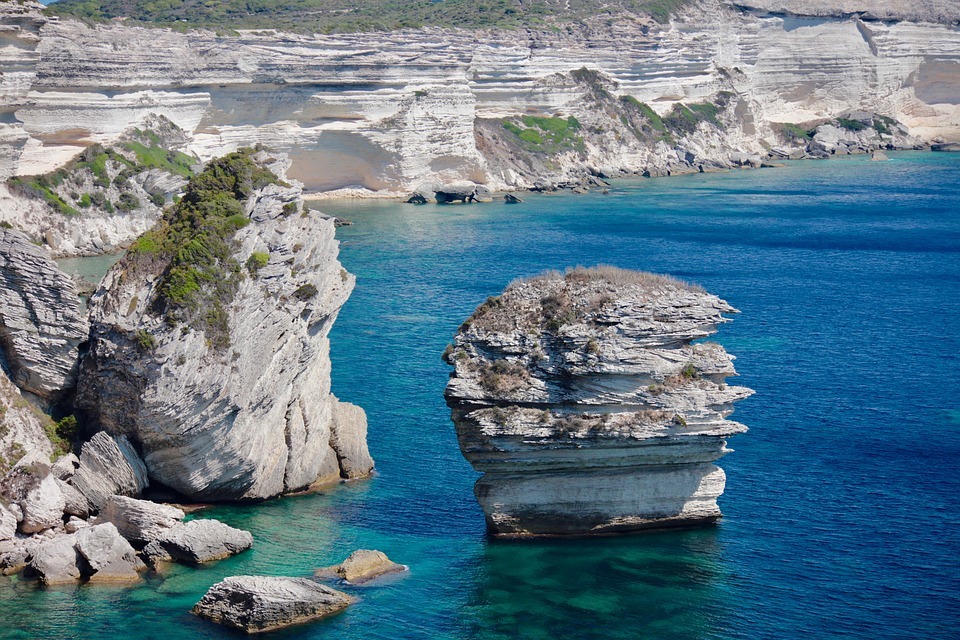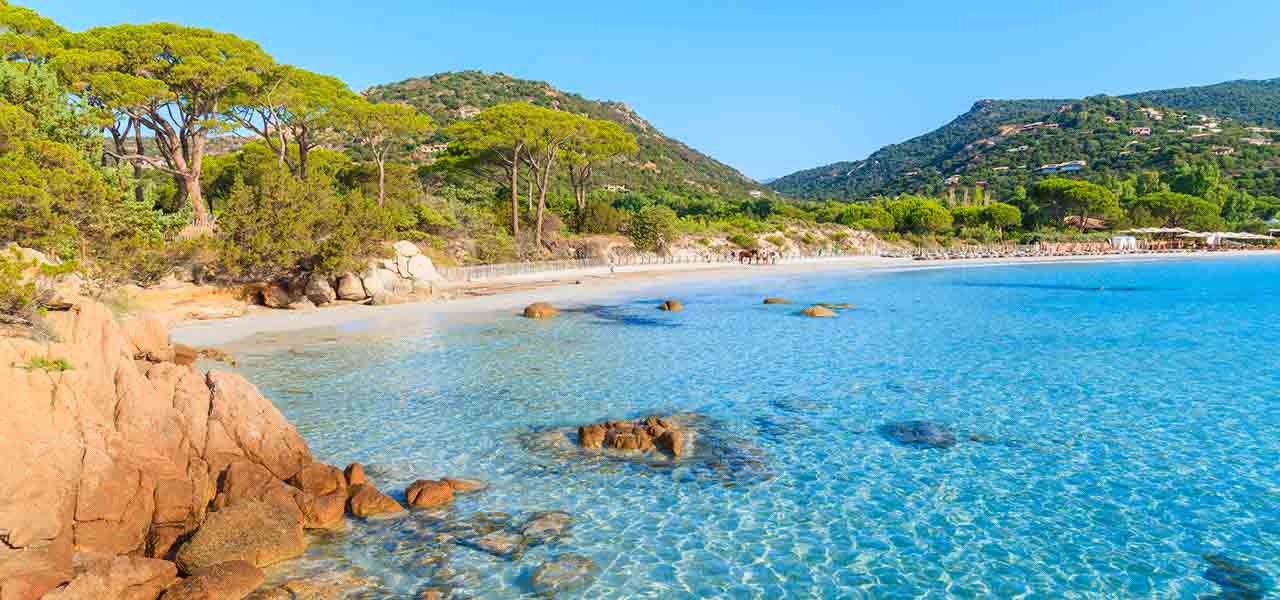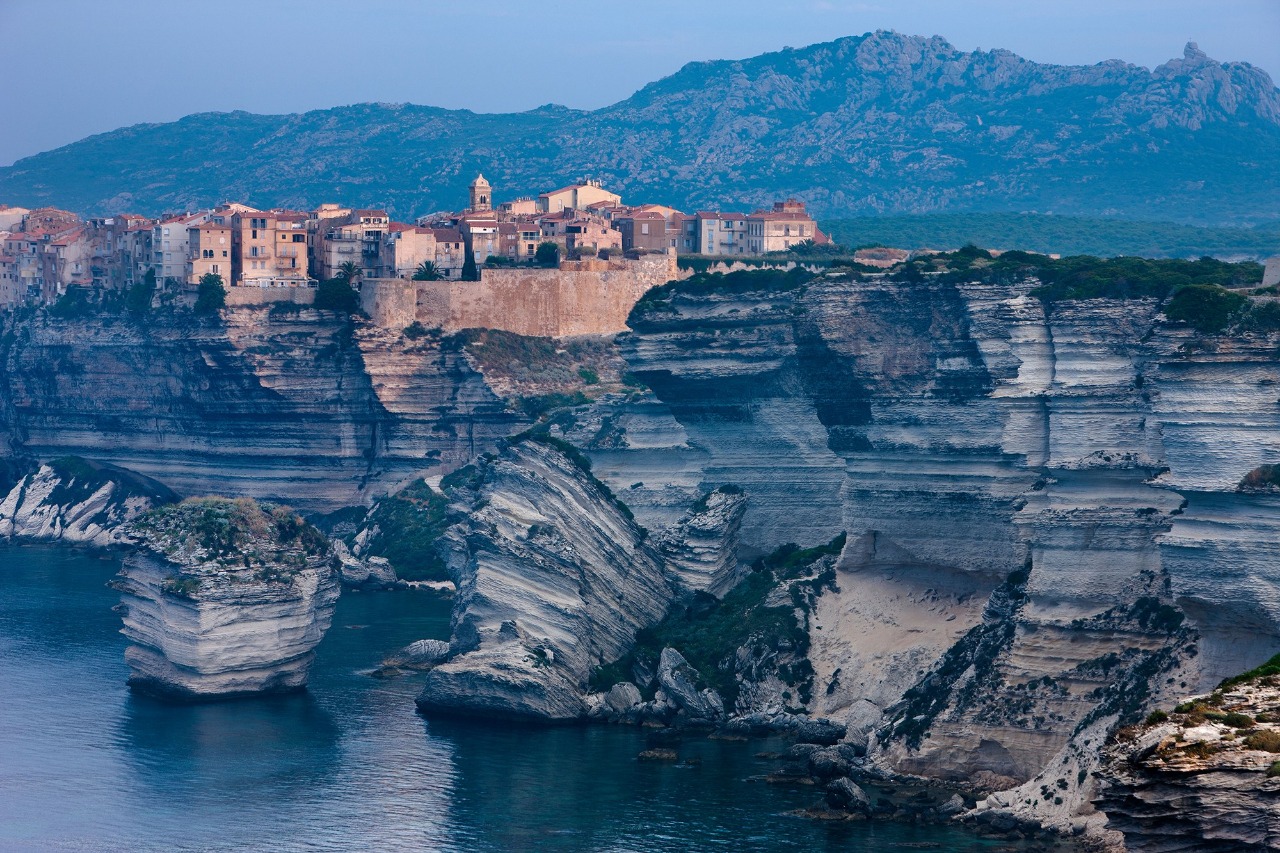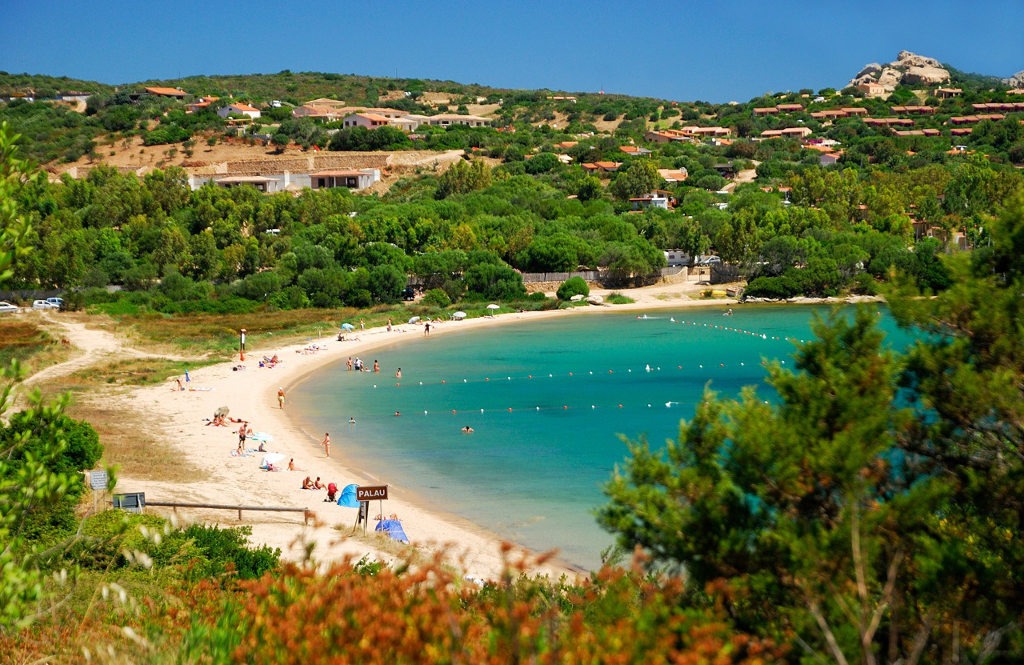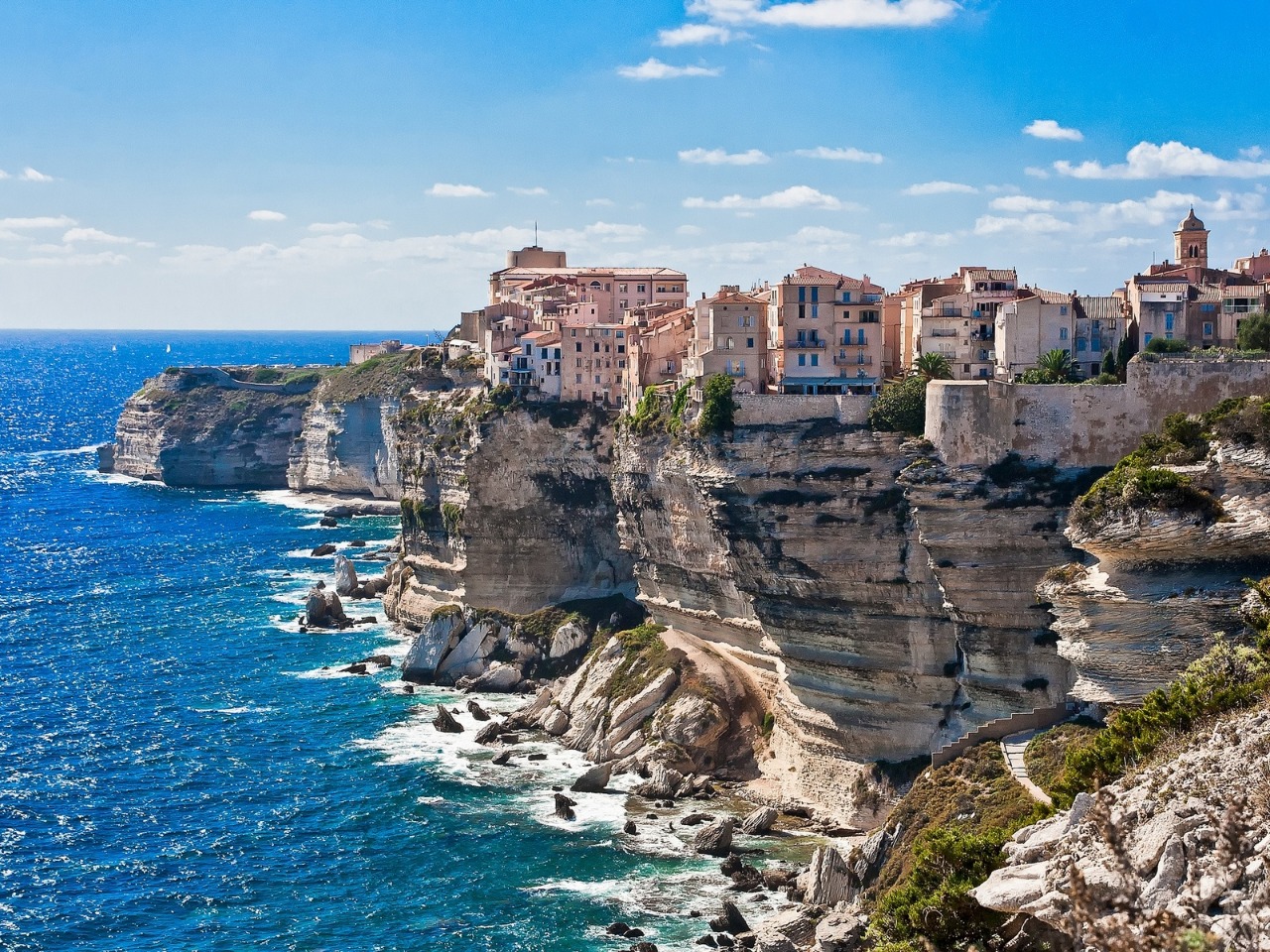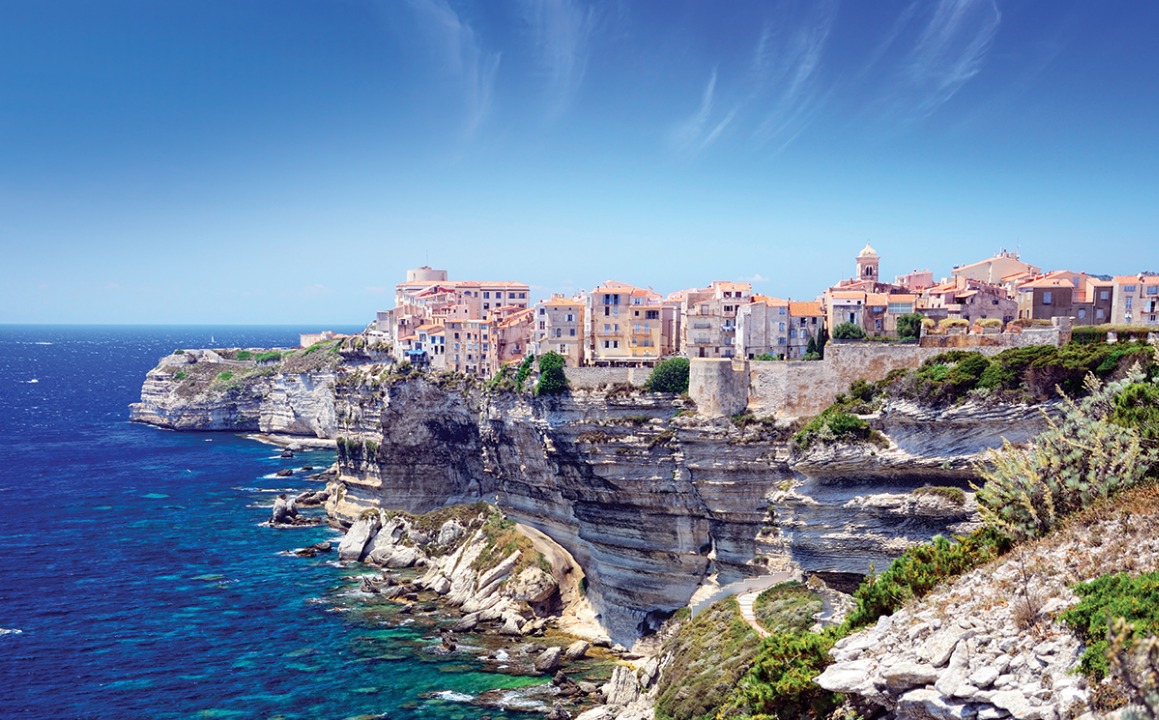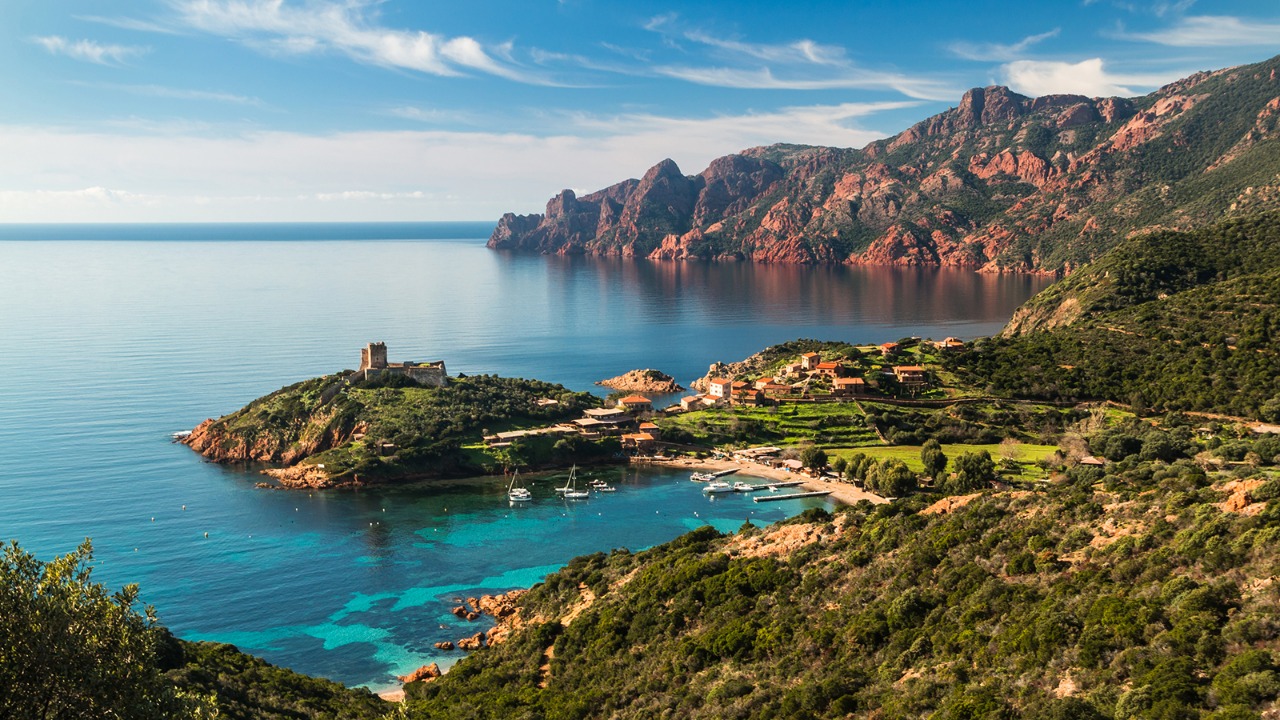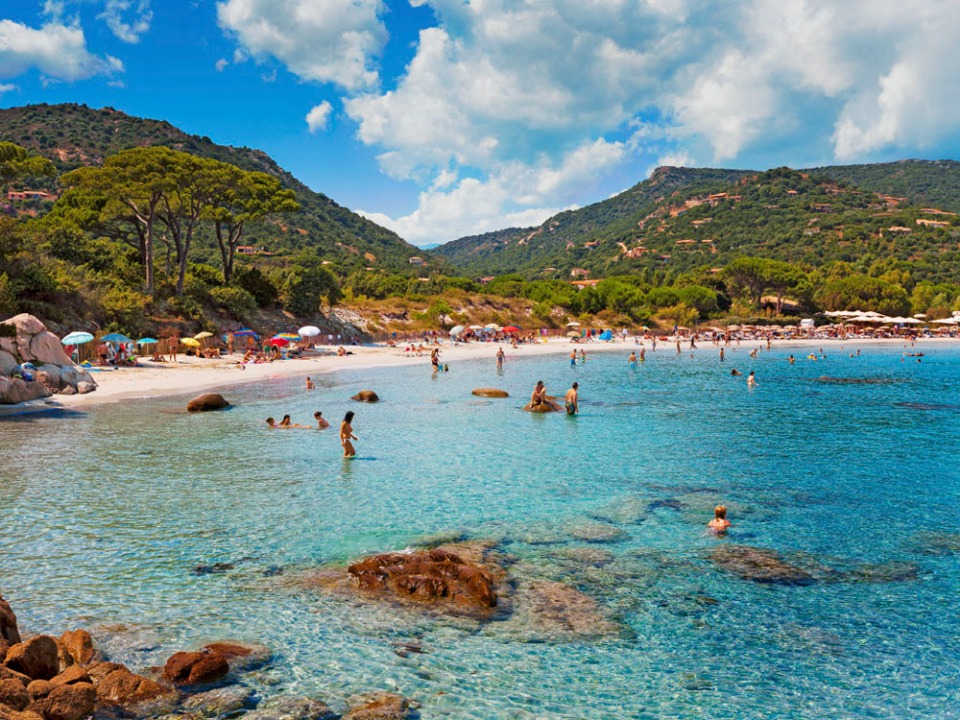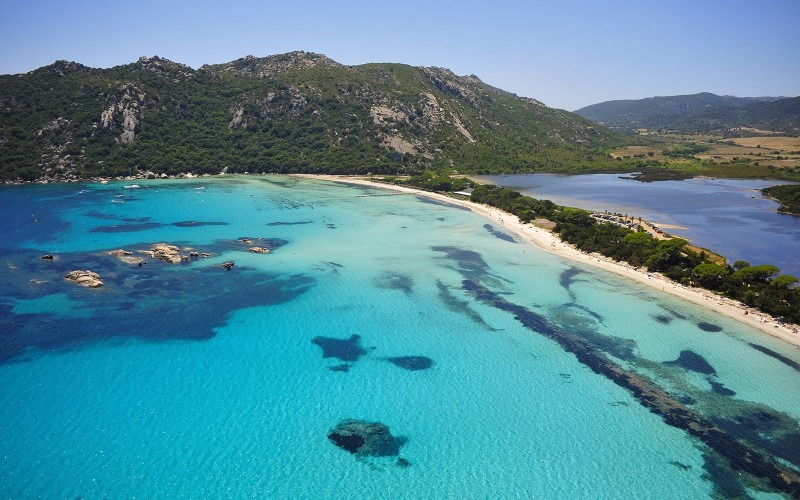Fotos de: Córcega
Mapa localización
Aeropuertos
Hoteles y otros alojamientos
Qué visitar
Consulados y embajadas
World Nomads
El seguro de viaje con la mayor cobertura.

El seguro de viaje con la mayor cobertura.

Córcega
Córcega es una isla francesa en el mar Mediterráneo. Se encuentra en el oeste de Italia, al sureste del continente francés y al norte de la isla italiana de Cerdeña. Las montañas constituyen dos tercios de la isla, formando una sola cadena. Antes de la anexión francesa, Córcega estaba bajo la posesión de la República de Génova.
Córcega es una de las 27 regiones de Francia, aunque está designada por colectividad territorial (collectivité territoriale) por ley. Como una colectividad territorial, Córcega tiene algunos poderes más grandes que otras regiones francesas, pero en la lengua actual se la denomina región y casi siempre aparece igual. Aunque la isla está separada del continente por el mar de Liguria y más cerca de Italia que el continente francés, políticamente, Córcega es parte de la Francia metropolitana.
Córcega se divide en dos departamentos: Haute-Corse y Corse-du-Sud, con su capital regional, Ajaccio, de Haute-Corse, es el segundo asentamiento más grande de Córcega.
Córcega es una de las 27 regiones de Francia, aunque está designada por colectividad territorial (collectivité territoriale) por ley. Como una colectividad territorial, Córcega tiene algunos poderes más grandes que otras regiones francesas, pero en la lengua actual se la denomina región y casi siempre aparece igual. Aunque la isla está separada del continente por el mar de Liguria y más cerca de Italia que el continente francés, políticamente, Córcega es parte de la Francia metropolitana.
Córcega se divide en dos departamentos: Haute-Corse y Corse-du-Sud, con su capital regional, Ajaccio, de Haute-Corse, es el segundo asentamiento más grande de Córcega.
Turismo
Ajaccio (Corse-du-Sud) es la capital de la región y fue la cuna de Napoleón Bonaparte en 1769.
Bastia (Haute-Corse) es el próspero puerto principal de la isla y es famoso por sus vinos.
Bonifacio (Corse-du-Sud) se encuentra en una península de piedra caliza en el punto más al sur de Córcega y ofrece una vista impresionante del Mediterráneo.
Calvi (Haute-Corse) es principalmente un lugar de vacaciones y el punto de lancha más cercano a la Francia continental situada al sureste de Niza.
Cap Corse (Haute-Corse) tiene una península de 25 millas (40 km) de largo, pero estrecha en el extremo norte de la región.
Castagniccia (Haute-Corse) es una región montañosa cubierta de castañas al este de Corte y se considera el corazón de Córcega.
Corte (Haute-Corse) se encuentra en el centro geográfico de Córcega y fue la capital elegida por el líder de la independencia, Pasquale Paoli, de 1755 a 1769. Ahora es el hogar de la Universidad de Corse.
L'île Rousse (Haute-Corse) fue fundada en 1758 por Pasquale Paoli para crear un puerto que no estaría en manos de los genoveses y ahora es un importante destino turístico y terminal de ferry.
Saint Florent (Haute-Corse) es un puerto pesquero ubicado en la base de la península norte y tiene su parte de yates, riqueza y atrae a muchos turistas a sus excepcionales playas mediterráneas y viñedos.
Piana (Corse-du-Sud) es un bonito pueblo al sur de Oporto y se accede por medio de arcos de granito a lo largo de la carretera.
Porto-Vecchio (Corse-du-Sud) es una ciudad portuaria de tamaño mediano ubicada en un hermoso puerto en la esquina sureste de Córcega y las colinas al noroeste son parte del parque natural.
Bastia (Haute-Corse) es el próspero puerto principal de la isla y es famoso por sus vinos.
Bonifacio (Corse-du-Sud) se encuentra en una península de piedra caliza en el punto más al sur de Córcega y ofrece una vista impresionante del Mediterráneo.
Calvi (Haute-Corse) es principalmente un lugar de vacaciones y el punto de lancha más cercano a la Francia continental situada al sureste de Niza.
Cap Corse (Haute-Corse) tiene una península de 25 millas (40 km) de largo, pero estrecha en el extremo norte de la región.
Castagniccia (Haute-Corse) es una región montañosa cubierta de castañas al este de Corte y se considera el corazón de Córcega.
Corte (Haute-Corse) se encuentra en el centro geográfico de Córcega y fue la capital elegida por el líder de la independencia, Pasquale Paoli, de 1755 a 1769. Ahora es el hogar de la Universidad de Corse.
L'île Rousse (Haute-Corse) fue fundada en 1758 por Pasquale Paoli para crear un puerto que no estaría en manos de los genoveses y ahora es un importante destino turístico y terminal de ferry.
Saint Florent (Haute-Corse) es un puerto pesquero ubicado en la base de la península norte y tiene su parte de yates, riqueza y atrae a muchos turistas a sus excepcionales playas mediterráneas y viñedos.
Piana (Corse-du-Sud) es un bonito pueblo al sur de Oporto y se accede por medio de arcos de granito a lo largo de la carretera.
Porto-Vecchio (Corse-du-Sud) es una ciudad portuaria de tamaño mediano ubicada en un hermoso puerto en la esquina sureste de Córcega y las colinas al noroeste son parte del parque natural.
Gastronomia
Desde las montañas hasta las llanuras y el mar, muchos ingredientes juegan un papel. El jabalí (Cingale, Singhjari) es popular. También hay pescado y pescado de río, como la trucha. Delicias como ficatellu (también llamado ficateddu), coppa, jamón lonzu (prizuttu) están hechos de carne de cerdo Córcega (Porcu Nustrale). Quesos como brocciu, casgiu merzu, casgiu veghju están hechos de leche de cabra o de oveja. Las castañas son el principal ingrediente en la fabricación de polenta. También hay una variedad de alcohol que van desde Aquavit (aguardiente), vinos tintos y blancos de Córcega (Vinu Corsu), vino moscatel (normal o sin gas) y el famoso aperitivo "Cap Corse", producido por Mattei. Los maquis, el arbusto que crece en la zona, es comido por los animales locales y crece cerca de ciertas plantas, lo que resulta en un sabor apreciable en los alimentos.
El clima
El clima en Córcega se encuentra bajo la clasificación climática de Köppen del clima cálido de verano en el Mediterráneo (Csa).
Las heladas no son habituales en las zonas costeras, pero pueden aparecer entre noviembre y abril. La temperatura promedio del mar varía de 19 ° C en junio y octubre a 23 ° C en agosto. El mar suele ser demasiado frío para nadar entre noviembre y mayo.
En primavera u otoño puede sentirse más frío debido al fuerte viento que sopla en las montañas y la costa.
Hay un promedio de 71 horas de sol al día. La luz solar promedio varía de 4 a 5 horas por día en invierno y de 10 a 12 horas por día en verano. Una vez más, suele haber más nubes en las montañas.
Los meses más lluviosos son marzo, abril, octubre y noviembre. Por lo general, es seco de mayo a septiembre, especialmente en el costo. Las tormentas son comunes en las montañas durante el verano. En general, el este es más húmedo que el oeste. La siguiente tabla muestra la precipitación promedio en milímetros, así como el número de días húmedos por mes.
Las heladas no son habituales en las zonas costeras, pero pueden aparecer entre noviembre y abril. La temperatura promedio del mar varía de 19 ° C en junio y octubre a 23 ° C en agosto. El mar suele ser demasiado frío para nadar entre noviembre y mayo.
En primavera u otoño puede sentirse más frío debido al fuerte viento que sopla en las montañas y la costa.
Hay un promedio de 71 horas de sol al día. La luz solar promedio varía de 4 a 5 horas por día en invierno y de 10 a 12 horas por día en verano. Una vez más, suele haber más nubes en las montañas.
Los meses más lluviosos son marzo, abril, octubre y noviembre. Por lo general, es seco de mayo a septiembre, especialmente en el costo. Las tormentas son comunes en las montañas durante el verano. En general, el este es más húmedo que el oeste. La siguiente tabla muestra la precipitación promedio en milímetros, así como el número de días húmedos por mes.
Otros destinos turísticos en:
Francia
Francia
Otros destinos turísticos mundiales
¿Por qué reservar con BOOK HOTEL LISBOA
Los mejores precios
Nuestras asociaciones con los operadores más grandes del mundo ofrecen una busca sobre los mejores precios del mercado.
Mas opciones
En Rotas Turisticas puede reservar el hotel, comprar el boleto aéreo, reservar el traslado desde el aeropuerto hasta el hotel y viceversa, reservar las excursiones locales, alquilar el automóvil, contratar un seguro de viaje y consultar los lugares para visitar y dónde ir.
Destinos de vacaciones
Cientos de destinos de vacaciones con todas las opciones que le permiten elegir fácilmente el destino que mejor se adapte a las vacaciones de sus sueños.
BOOK HOTEL LISBOA
Links

